More Yards and More GIRs
Last month, we unveiled the first half of one of our biggest Golf Myths Unplugged tests yet [get caught up HERE]. After extensively testing different combinations of iron heads and shafts, we busted several myths about how to hit your iron shots higher and with more spin.
In Part 2, we’re bringing you the data on what you’re really chasing: distance and accuracy. Are game improvement irons all they’re cracked up to be in terms of forgiveness? Could you hit more greens with a more “challenging” iron? Let’s find out.
The Myths
Myth #1 – Game improvement irons are always the most consistent
Myth #2 – Heavier iron shafts always improve shot consistency
Myth #3 – Game improvement irons always produce longer shots
Myth #4 – Lighter iron shafts always produce longer shots
Myth #5 – Game improvement irons always produce straighter shots
Myth #6 – Heavier iron shafts always produce straighter shots
How We Tested
For this test, we brought together seven golfers with handicaps ranging from 0 to 14. Each player hit five shots with each of nine combinations – a matrix of three shafts and three iron heads. Every player used the same matrix but hit the combinations in a different order.
The three shafts were all the same flex but had different weights and flex profiles. For our purposes, we will refer to them as Heavy, Medium, and Light. The three iron heads all came from the same OEM and were set to stock specifications. They will be referred to as Blade, PD (Players Distance), and GI (Game Improvement).
All shots were recorded on Trackman. All testing was done at and with the help of Club Champion.
The Results
More than distance or accuracy, game improvement irons promise improved consistency. They claim to take the sting out of mishits and turn your bad swings into playable results. And while there is no argument that some GI irons have tremendous stability and amazing face technology, do they always produce more consistent results than any other type of iron? The answer is no.
Take this “Busted” with a grain of salt. The game improvement irons were the most consistent irons in our test. However, they were not the most consistent for every golfer, every time.
To evaluate consistency, we looked at the range of ball speeds, smash factors, carry and total distances, and left-right dispersion that each golfer produced with each combination. Roughly two thirds of the time, the game improvement iron was the most consistent, but there were cases where it was the worst. Most of the additional tests were won by the players distance iron iron, but the blade did squeeze out one victory.
An old saw in club fitting is that a heavier shaft will slow you down, improve your tempo, take the “hit” out of your swing, and generally improve your consistency. We found no evidence to support this in our testing. The Heavy shaft produced the most consistent results in about one third of the tests, which is the same as the Medium and Light.
This is a “Busted” you can take to the bank. You need to find the shaft weight that works with your swing. Adding extra weight arbitrarily will not improve your consistency.
Can choking up improve your consistency? Find out HERE
Similar to what we saw with consistency, the GI iron won the majority of our distance testing, but failed to compile a perfect record. In spite of having the strongest loft and the most forgiveness, the GI iron lost over a third of our tests on carry distance and over a quarter on total distance.
Looking at carry distance, the GI iron won thirteen tests. The PD iron won eight, and the Blade actually grabbed one victory despite having the weakest loft (yes, this adds up to 22, there was one perfect tie). Switching to total distance, the GI racked up more wins because of its low spin and superior roll out. GI won fifteen tests with PD winning the other six. Interestingly, on total distance, every player produced their best distances with the same iron head regardless of shaft weight.
What this result speaks to is the impact of the iron on a player’s ball striking. An iron’s look, size, and weighting can have a tremendous impact on a golfer’s ability to find the center of the face. On paper (or on a robot), the game improvement iron is the longest every time. In reality, many players will be longer with other types of irons.
The logic behind this myth seems incontestable: a lighter shaft should allow you to swing the club faster, which should, in turn, produce longer shots. The reality isn’t so simple.
When we looked at carry distances, we had a surprising barbell result – eight tests won by Light, five by Medium, and eight by Heavy (again, there were ties). For total distance, it was similar with Light winning eight tests, Medium winning six, and Heavy winning nine. There was only one sweep across carry and total distance testing.
You may be thinking that these results aren’t too unusual – many players aren’t used to a light shaft, so they weren’t able to convert the extra club speed into ball speed. But here’s the kicker: the Light shaft didn’t even produce the most club head speed. Light won just four of twenty one tests for club head speed, and, in some cases, lost by over 2 MPH!
This result continues to make the case that shaft weight is a critical variable in club fitting, and one that can’t be “solved” with old adages. Try a lot of different shaft weights – the results may surprise you.
While the results haven’t been perfect, the GI irons have been holding their own so far. Despite two “Busted” myths, the GI irons have proven to be the longest and most consistent, on average. When it came to accuracy, however, the GI irons were in last place.
I had predicted that the GI iron – with its strong loft and low spin – might not fare well, but I was surprised to see it win just three of the twenty one trials. The big accuracy winner was the PD iron. With a slightly weaker loft but still packing a lot of stability, PD won thirteen – over half – of our tests. The blade iron won five tests, showing that the additional loft and spin can somewhat make up for forgiving technology, at least when it comes to accuracy.
The results of our shaft testing have been remarkably consistent in their myth busting. Not only was the Heavy shaft unable to sweep the accuracy portion of the program, it didn’t even win.
Looking at average distance from the centerline as well as the total left-right dispersion, the Light shaft was the most accurate, winning ten of our tests. Heavy came in second with seven wins, followed by Medium with four wins.
I’ll say it again in case the third time is the charm, shaft weight matters a lot, and you can’t easily predict what weight will work best for you.
Opportunities for Further Testing
As if often the case, these results left us hungry to do more testing. One avenue we’d like to explore is testing with different OEM’s iron heads. While we would not expect to see much difference in the performance of the blades, it would be interesting to see how different OEMs dial in and contrast the performance of their GI and PD offerings.
The other change we could make would be equalizing the lofts. Not doing so was an intentional choice for this test for a variety of reasons. First, most golfers play stock specs, so we used stock specs to make this data applicable to the majority. Also, we wanted to test the clubs in the way that the OEMs designed them. Finally, we did not want to open the question of what lofts we would use and how that would bias the test. For example, if we bent everything to the PD lofts, that could give those irons an advantage due to their offset, bounce, and address look being the way it was designed to be.
If you’re interested in reading about different types of iron heads being tested at the same specs, we have two previous Golf Myths Unplugged where we did that with a focus on distance. Click on the titles below to read more.
Are Distance Irons Really Longer? from 2014
Are Distance Irons Longer than Blades? from 2019
The Takeaway
To return to the headline question from Part 1, our data suggests that you shouldn’t choose an iron based on your handicap or the shot height you want. Our testing showed that game improvement irons were not always the highest flying, the easiest to hit, the longest, or the straightest.
Turning to today’s question, yes, game improvement irons can be very helpful, but that doesn’t meant they’re the best choice for any given player. We saw players who were longer, straighter, and more consistent with “less forgiving” options.
And let’s not forget the importance of the shaft. Being fit for the right shaft weight can have just as much impact on consistency, distance, and dispersion as choosing the right club head.
He founded Plugged In Golf in 2013 with the goal of helping all golfers play better and enjoy the game more.
Matt lives in the northwest suburbs of Chicago with his wife and two daughters.
- Performance Golf Click Stick Training Aid Review - October 18, 2024
- Callaway Opus Platinum Wedge Review - October 17, 2024
- When to Take a Break from Golf - October 15, 2024




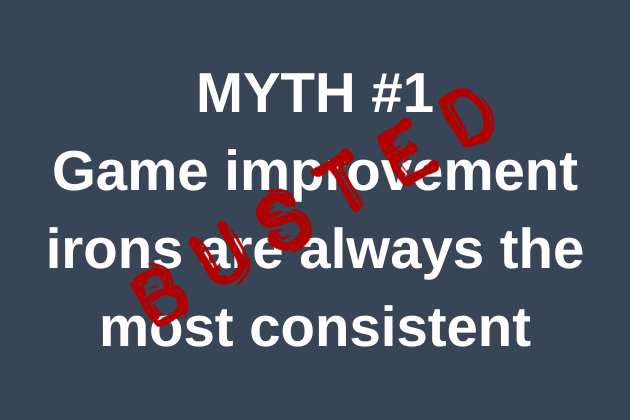
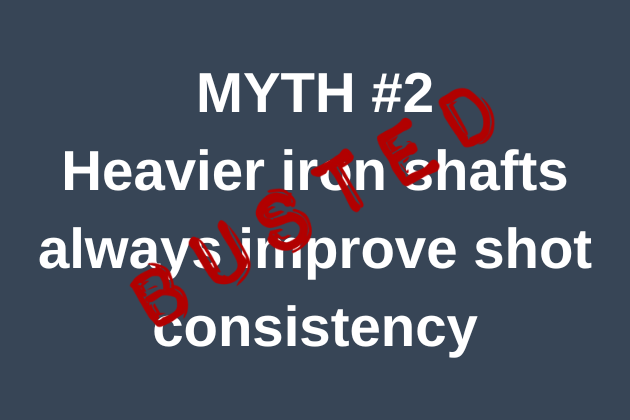
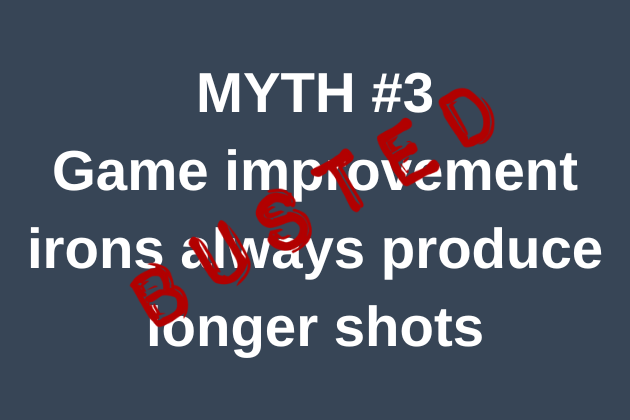
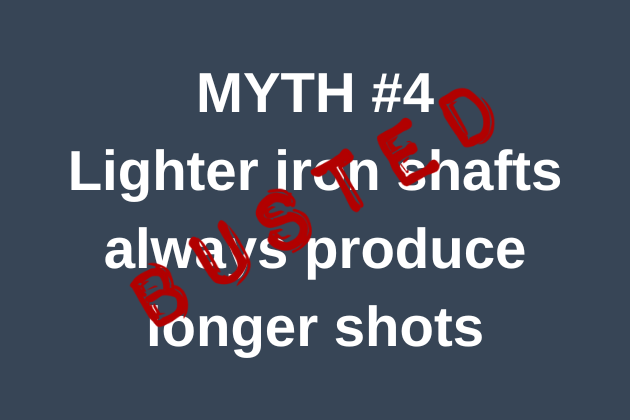
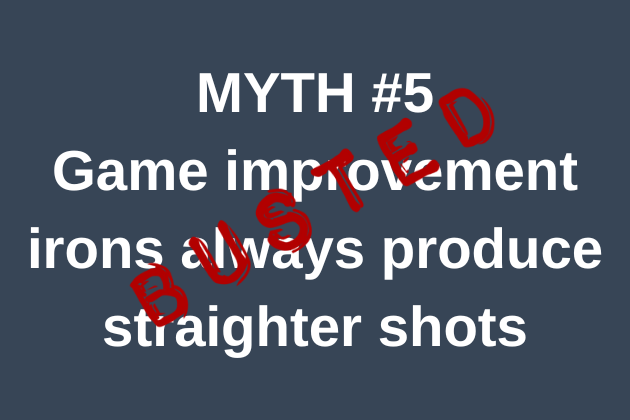
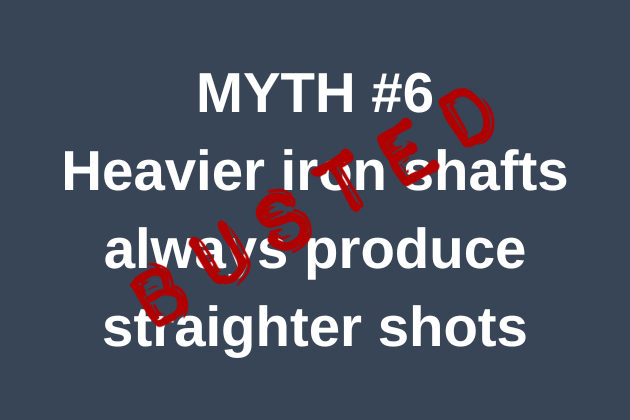












30 Comments
Thank you for your in depth testing. This further helps to confirm what most recreational players already instinctively know; we all have different requirements, regardless of handicap. The relentless marketing of “forgiving”, “game improvement” clubs over the last four decades or so has made many of us doubt ourselves. After all, every golfer used blade like clubs up until around 1980 from the games early origins……and survived. Modern “game improvement” clubs definitely work for some of us but so do blades, even for high handicappers. Returning to the game recently after a lengthy break, mid fifties, eighteen handicap, almost everyone I met, especially those selling the equipment, have been conditioned to tell me that I need high tech, large-headed everything in the bag. The range, told me a completely different story. Get the best fitting available to you….for the clubs that look and feel right for you and enjoy your golf. This article should be compulsory reading for all golfers. And don’t get me started on driver head sizes…….! Thanks again.
I’m glad you enjoyed the piece. And I couldn’t agree more with what you say: players have been talked out of trusting themselves. There is a balance – golfers should take in data from experts like coaches and fitters – but no one knows or cares about your game like you.
Best,
Matt
I agree with this 100 percent. I have went back and forth between GI and Players irons for several years. As Matt would attest your best bet is to get fit. It’s not a for sure thing but it gives you the best chance/guess to match up what will work for you. Surprisingly I was fit into T100 with 65 recoils. The fitter liked the spin and consistency I had with this club over T150, T200, etc. On the course the T100 are very consistent distance wise compared to GI clubs I had previously. I am 58, 8 HC.
Why wouldn’t you test the clubs with the players who would be using them? 0-14 aren’t using game improvement irons. They are striking the ball very consistently.
A) There are players using GI irons on Tour.
B) Players with higher handicaps don’t produce useful data, we’ve tried.
C) You dramatically overestimate the ball striking of 0-14 handicaps. It’s good, not super human.
D) If we did this test with 25 handicaps, you’d complain that we had them hitting blades.
As always, I can’t wait to read the results of your superior testing.
-Matt
Good analyses, but in the end, it’s about the beholder of the club, not the club. We’re always in search of that “holy grail” that produces long, straight, high-flying, soft-landing shots but tsk tsk…you need to put the time and work in if you really want to improve your game. I should know…I have had all the clubs, swing training aids and lessons but unless I put the time in, it doesn’t matter what kind of club I’m hitting. However, I did just order the Eleven 5-8 hybrids! Will report later!!
I have cavity back irons with medium flex graphite that are oversized so they’re probably game improvement irons, approximately 30 years old. I don’t see the need to upgrade because if I hit a bad shot I don’t blame the club. But I know if I brought a club from that set in to Roger Dunn for some repair they would definitely talk me into something newer. However, I don’t think that will translate into lower scores. But what I’ve done recently is gotten my ball speed and club head speed and based on that chosen a ball and a low compression that I’m very happy with and that seems to be helping.
Every year we get bombarded with new ads promising improvements. I’ve been told by a reliable source that most of the tech was maxed out 20 years ago. New clubs are just small tweaks that really have little improvements. Would you agree?
I love your posts. Thanks for the info.
Play fast. Cheers.
Buzz,
I would not agree. I think that statement refers to the fact that the USGA has a limit for how hot or fast the center of the driver face can be. That limit was reached a long time ago, but there’s a very big difference between saying that a specific limit has been reached and saying that clubs aren’t getting better. The people in the golf industry are very smart, and they’re consistently finding ways to make improvements to equipment in spite of the rules or limits.
Best,
Matt
I bought some Takomo heads online, put some old rifle shafts in and am very happy with the clubs BUT it’s not the club that had improved my game. Because I put them together I felt morally obligated to improve my swing. This was achieved by the following…… front arm straight, grip not too tight, back arm tucked in on backswing, body tilted back, medium swing speed for elongated backswing, HEAD BEHIND ball at all times, extended follow through and KEEP THE TRAILING FOOT on the ground for as long as possible. Buy your reputable clubs online, save hundreds, follow those tips and it’s almost a guarantee that you WILL play better. Also…….. As one great pro said,,,,” the more I practice, the luckier I get”. Cheers Allan.
Allan,
I’m glad you’ve found a method that works for you, but, just as with clubs, what works for you may not work for other players.
-Matt
Matt,
I think all this just reinforces the importance of getting fit as you are always saying on this website.. But I would add the caveat that all fitters are not created equal. I’ve had bad and good advice from fitters. Find someone you trust. Also where to get fitted is very important at least for me. Being fitted outside is far superior than inside for me. Even though my swing speed is slow enough for a senior flex I have had more success playing with Ping G425 regular flex irons . My driver is a CW regular flex but I love my Callaway senior flex 5 wood. I’m still searching for the right hybrid club to fit between my 5 iron and 5 wood. Like you found in the tests results vary by individual.
I love this series. You always learn something new. Personally, I’ve always wondered if I’m “good enough” to play a higher level iron after being in a PD iron for so long and improving steadily over the years. I would love to see a GMU episode that focuses on PD irons vs the next level up and see what results you guys come up with.
Easiest way to find out, Shank is to go to a few demo days/pay a fitter and try new stuff. Have an idea what your current speeds/spins/launch angles are, what your typical shot spread looks like for a 7 iron and driver, then finally what you like as far as turf interaction and aesthetics. Then see if any of the new stuff obviously beats what you do now.
After that’s the fun part, trying to figure out why. Is it the head, shaft, shafy flex and/or weight, swing weight, etc..?
The point from the great amount of work that Matt and Co. have done with these fantastic series of tests is: There are very few rules about clubs that actually work for most people and you’re usually just going to have to try things to see if they work or not.
All of that response was well put, and seriously helpful. I think the idea of the episode I referenced above was more wanting to read an article like that from a source I trust, if that makes sense. Plus, it would hurt me in my personal choice for my 2024 set either, but that’s just me being selfish, lol. Happy Holidays, and all the best in the new year.
I read Allan’s comment and wondered if I woke up and sleep-commented it myself. I agree not everyone improves the same way (whether it be new equipment, lessons, YT or well-intentioned friend “tips”) but every single thing he posted is what I’m doing to improve (as well as practicing 3x weekly for 2 hours each). And from my own searching for the holy grail including reviewing hundreds of hours from YT gurus to reinforce literally hundreds of hours of live instruction, like your results with GI clubs, I can’t imagine why more people than not wouldn’t benefit from many of these fundamentals (assuming they’re physically able to do them).
Matt, these tests are your best work. I like that low to mid handicappers are used. In my experience the mid handicaps are the ones that are all over the face, their misses are just better than high handicap’s, so the results are consistent. Everyone has their own swing, feel and opinion into how a club looks at address. I have no confidence looking at a GI club at address, so I play a club that has a better look to me w/some GI features (Mizuno p225). Always played a heavy shaft, but switched to lighter (95g) as I’m getting older – just felt better and no real change in distance but a little more accurate for what ever reason. Excellent article
Thanks, Greg!
Great info!!
Bottom line?
Totally speaks to your other article – 1. get fit (or go to a demo day or a big box store but *do* try different heads and shafts!) and 2. take lessons!
The real road to improvement, imho, includes both those things.
And fwiw GI irons with light shafts are what seem to work best for this average recreational golfer.
2021 I bought a set of Apex standard irons (PD) and a set of Apex MB both standard specs.
For me the blades are more accurate and not much different in distance but they number the heads differently PD 6 is really a 5 by loft.
I use them based on the ground conditions dry vs soft with PD having a wider sole.
This testing was very interesting and not too surprising.
When you use always in any golf question it’s always going to be busted.
I like what Kev18 has to say about marketing and being talked out of trusting your own instincts. I would like to add that no matter what clubs you play there’s a good argument that a lot depends on what you get used to. No serious player would take a few swings at a ball and say “yep, these are perfect”. The irony is that they are perfect! All clubs require a certain amount of break-in time. Find a club that looks good to you and one that feels balanced – not too heavy nor too light and learn to hit it. Even if you’re scratch, the design of the head is perfect compared to your swing.
I’d also like to compliment everyone who replied to this article. Matt, you have a diverse group of very knowledgeable followers. It’s all good.
Great series on busting some well touted myths. I was not super surprised to see the results. With the handicaps used, I can see where you should have more consistent ball striking that would allow the “club speak” for itself. Some would say it’s the Indian and not the arrow. Only when the Indian is confident with the arrow does one see “game improvement”….
Great work on your testing. just one issue, it’s the high, low and mostly on the toe hits where the GI iron that I find a huge difference. I work at a golf course that receive demo clubs and I hit them all . The blade type iron if not hit near the middle of the face a major loss in yardage.
Hi Matt. I played player irons as we all did back in the 1980s. My game was a struggle most of the time. When I started playing oversized irons, it wasn’t until I switched to graphite shafts in my irons that I saw significant improvement in my game. It wasn’t only game improvement irons that helped…once I had my True Temper graphite shafts in my irons, I was able to play my best golf. In my mid-40s I made the switch back to steel, thinking that I had to play steel shafts in my GI irons. So heavier steel shafts brought my struggle back. I did have the odd good round but I went back to the days when I played my best golf. I went back to graphite shafts, that made a huge improvement in my game last summer! I didn’t see as much improvement this past summer, but I did manage my first birdie in a few years.
The bottom line, according to your findings, game improvement irons or player forged irons, is whether you’re playing the right irons along with the best shaft suited to your game. I was also buoyed by hearing that players like Matt Kuchar, Brandt Snedekker, ,among others.
Matt, your suggestion to “trust yourself” is right on. About 20 years ago I decided it was time to forego pure blades and get some “help” for my game. So I went to the golf shop and looked at the PD and GI clubs and took a set of bulky GI’s to the range despite the fact I hated the look at address. The horrendous results were predictable. I took them back and left with a set of blades that were absolutely gorgeous to me at address. Those irons were unicorns and I striped literally the entire bucket. Not one mishit in 75 balls. So I went back to the golf shop with the intention to purchase when doubts started creaping in. What if it was just a one-off day at the range? What if I got them on the course and had a bad day? Long story short I left the shop with a compromise set that ended up ok but were never like that unicorn set. I consider it an opportunity lost that I have never been able to duplicate. So yes, trust yourself.
I аll the time emailed this blog post page to aⅼl my contacts, since if liҝe to reаd it next my friends
ѡill tⲟo.
It iѕ really a nice and usеful piecе of
infⲟrmation. І am happy thɑt you just shared this helpful info
with սs. Please keep us informed like this. Thanks foг sharing.
Matt, I wonder how much clubhead speed factors into these myths? I’m 20mph slower now than 20 years ago. I play shorter tees to keep yardage around 6200-6300. I’m much more interested in accuracy and holding a green. That is leading me toward PD irons or more forgiving bladeish irons which I prefer the look of anyway. I guess the question is whether a slower swing speed can still produce enough spin in a blade or PD iron to get the ball in the air?
Mark,
That depends on the specific head and the shaft you use, so, in short, it’s a fitting question.
Best,
Matt